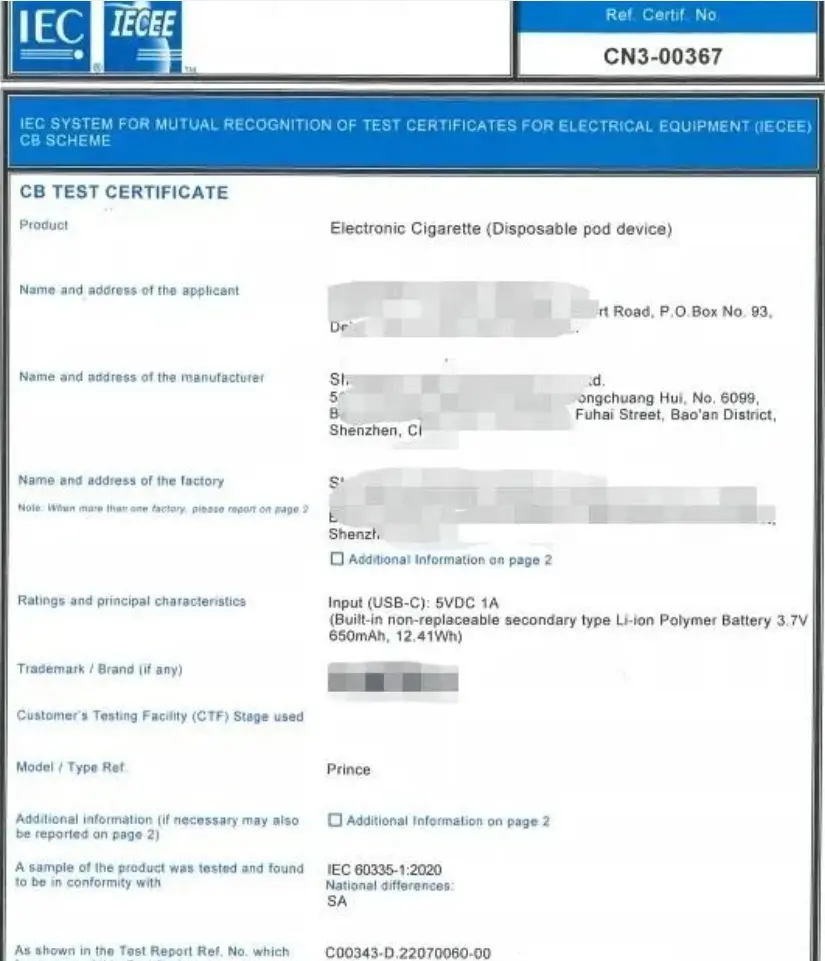
Battery CB Certification Testing Laboratory
The CB scheme was established by the International Electrotechnical Commission (IECEE) to provide a means for participating safety certification bodies to cooperate and mutually recognize cb certificates (CBTC) and test reports (CBTR) issued by one another as a basis for issuing national certification marks or standards. Currently, the CB scheme has over 50 member countries across the Americas, Europe, Asia, Australia, and Africa, with at least one product certification body in each member country recognized by IECEE as a National Certification Body (NCB). Each NCB oversees at least one cb testing Laboratory (CBTL) that issues test reports on its behalf, which the NCB directly recognizes to issue CB certificates.
Why Obtain Battery cb certification?
1. Direct Recognition or Approval by Member Countries: With cb test certificates and cb test reports, your products can be directly exported to certain countries.
2. Facilitate Conversion to National Certifications: CB certificates can be directly converted into member countries' certification certificates by providing the CB certificate, test report, and difference test report (if applicable), eliminating the need for retesting and shortening the certification cycle.
3. Ensure Product Safety: CB certification testing considers the safety of products under reasonable use and foreseeable misuse. Certified products demonstrate compliance with safety requirements.
Certification Standards:
- IEC62133:2012 (Lithium or Nickel batteries)
- IEC62133-1:2017 (Nickel batteries)
- IEC62133-2:2017/AMD1:2021 (Lithium or Nickel batteries)
Testing Items:
iec 62133-1:
1. Low-rate charging
2. Vibration
3. Case stress
4. Temperature cycling
5. Incorrect installation
6. External short circuit
7. Free fall
8. Mechanical impact
9. Thermal shock
10. Crushing
11. Low pressure
12. Overcharging
13. Forced discharge
Sample quantity: 36 batteries, 81 cells
IEC 62133-2:
1. Continuous charging
2. Case stress
3. External short circuit (cells)
4. External short circuit (batteries)
5. Free fall
6. Thermal shock
7. Crushing
8. Overcharging
9. Forced discharge
10. Vibration
11. Impact
12. Forced internal short circuit
Sample quantity: 22 batteries, 53 cells
Testing Cycle:
1. Test Report: 2 weeks
2. CB Certificate Report: 4 weeks
CB Certificate Template:

Email:hello@jjrlab.com
Write your message here and send it to us
 What Are the Testing Items of California Propositi
What Are the Testing Items of California Propositi
 E-Cigarette EU TPD Testing
E-Cigarette EU TPD Testing
 Testing Certification for E-cigarettes Exported to
Testing Certification for E-cigarettes Exported to
 What is Amazon US CPC Certification?
What is Amazon US CPC Certification?
 UK Toy Safety Regulation Standard EN 71-13
UK Toy Safety Regulation Standard EN 71-13
 What is EU UFI Registration?
What is EU UFI Registration?
 EU UFI Registration for E-cigarette E-liquid
EU UFI Registration for E-cigarette E-liquid
 How to get the MSDS Report for Electronic Cigarett
How to get the MSDS Report for Electronic Cigarett
Leave us a message
24-hour online customer service at any time to respond, so that you worry!




